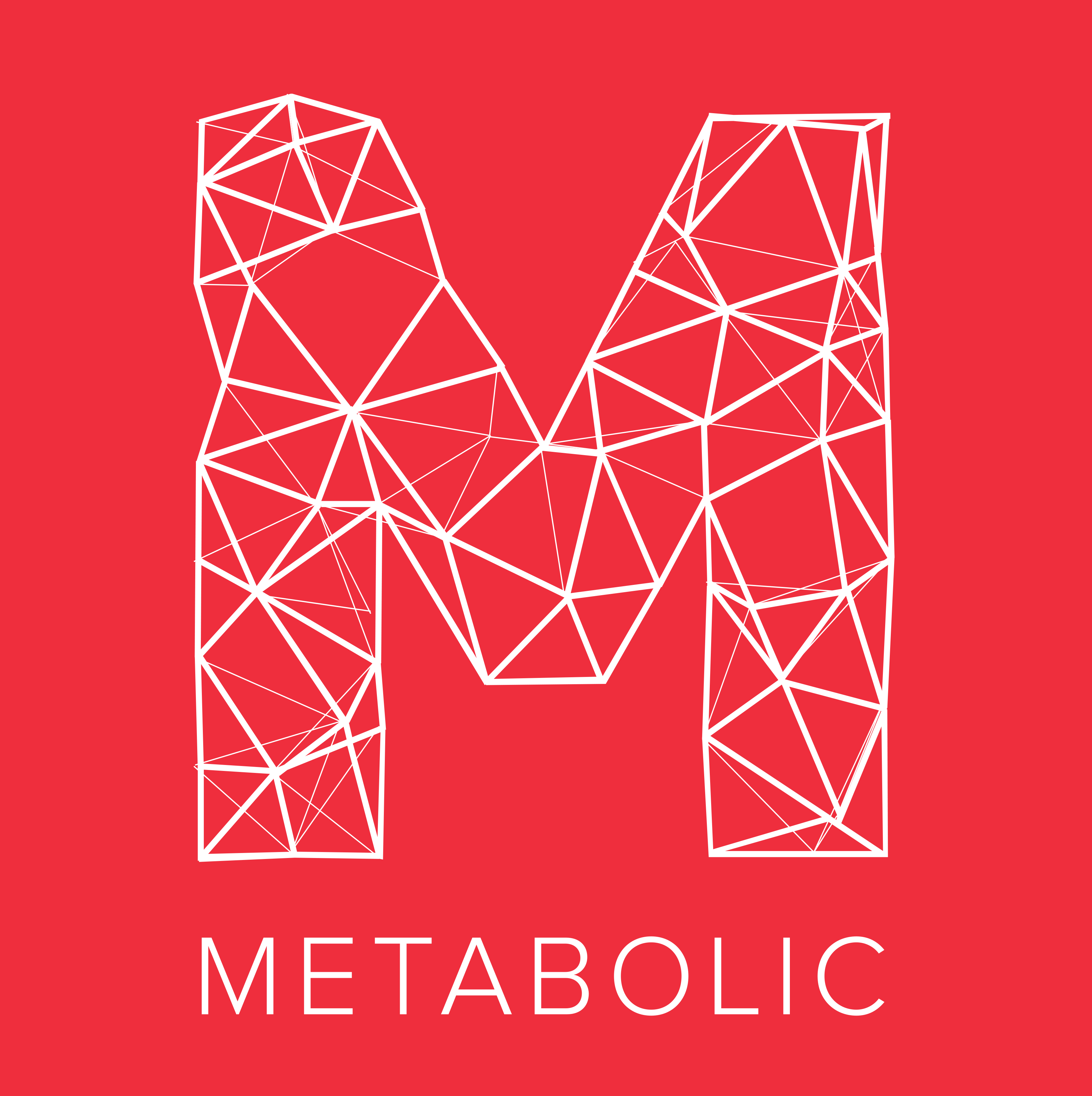 Interview with Oscar Sabag, Metabolic
Interview with Oscar Sabag, Metabolic
Tell us about Metabolic and its activities
Metabolic is an agency for societal transformation working with all types of partners to shift the global economy to a more sustainable state. In all of our work, we use systems thinking as the fundamental approach to analysis and strategy. This means we analyze the complex dynamics that give rise to sustainability challenges and find the key points where action is most urgent and effective.
Our work is by nature multidisciplinary, and we have covered a lot of topics, including issues related to the built space, industries, cities and regions, and whole economic sectors. Next to our work consulting work, we have some on-the-ground projects on polyculture research and development of decentralized energy technology.
What’s the urban metabolism?
The concept of urban metabolism was inspired by the collection of processes through which organisms transform food and resources into building materials, energy for work, and waste products. There’s a strong similitude between these biological reactions and the way human activity transforms raw energy and materials into consumption goods, machinery and technology, buildings and infrastructure, energy and waste. At the global scale, we refer to this as the metabolism of the anthroposphere, while at the city level, where population and economic activity are increasingly concentrated, we use the name of urban metabolism.
As a concept, urban metabolism is useful to visualize the connections and transformative processes through which energy and materials flow through our economy. This mapping in turn helps us to trace back negative impacts to driving factors, prioritize intervention areas, and identify opportunities for circular economy, all of which is part of our work at Metabolic.
What’s your idea about the cities of the future?
Currently cities englobe a huge part of human activity, accounting for approximately 55% of global population but 80% of GDP. At the same time, they consume 80% of our energy and 75% of the natural resources, while they generate 75% of greenhouse gas emissions. This makes cities a priority area in our work towards a sustainable future.
There are many visions of what cities will be like in the future, from dystopic and post-apocalyptic landscapes to reimagined humanistic, organic environments. This thought experiment is a fun exercise by itself, but it’s also an important tool to help us actually construct the future we want as society.
At Metabolic we try to not be prescriptive about how cities (or anything else) should be in the future. We acknowledge the existence of a diversity of visions and pathways with complementary benefits, where local context is fundamental, that can lead us to our objectives. In short, we believe that there are no one-size fits all solutions.
Personally, I generally favor a vision of cities as high-tech, high-density, zero-impact areas, where creativity, wellbeing, and personal development are encouraged. These cities have integrated nature and biodiversity into their space, and are basically self-sufficient for energy, food and materials production – thus agricultural and extractive activities (like mining and fishing) have retreated from the environment and now allow natural areas to occupy more land.
Is the urban environment the right place where circular economies can take place?
Working at the urban level has many advantages and many necessary conditions to create circular economies. As could be predicted from the high concentration of human activity, cities have a high concentration of material resources. Two common examples are phosphorus and copper, elements with rapidly decreasing natural reserves but that might be relatively abundant in cities. Human urine has very a high phosphorus concentration that can be retrieved for food production, while large amounts of copper are present in often outdated infrastructure. Cities have other advantages besides the proximity and availability of material resources: they are also fertile sites for innovation, in technological, organizational, and market developments; provide the space for interaction between many different stakeholders; and they usually have more capital access capital than rural spaces.
There are many barriers for circular economies to start emerging spontaneously across the world, from lack of adequate infrastructure and technology for material recovery, separation and reprocessing to adequate regulatory and market incentives to allow and encourage these activities, but cities are one of the best places where we can start removing these barriers and trigger the circularization of the economy.
Producing food and feed processing organic waste through edible insects’ bioconversion is something that can fit your idea of “smart” city?
This is something that definitely fits in the picture. Insects have many economic advantages and roles to play in a smart city and in a circular economy. As food sources, insects have great nutritional content, but their more important advantages are their efficient feed to biomass conversion ratios, reduced need for space, and facility to grow. At Metabolic, we’ve experimented with using insects for organic waste processing, for example using earthworms and black soldier flies to produce fish feed from kitchen scraps. The production of directly edible insects is more complicated, partially due to regulatory requirements, but from the point of view of industrial ecology it makes absolute sense.
How important could be food self-production in the XXIst century?
This depends on what exactly is meant by “food self-production”, the socioeconomic context, and the niche we would want this to play in the food system of the XXIst Century. For example, urban food self-production in microgardens can play an important role as a supplementary source of micronutrients from fresh produce for populations with low income or otherwise low access to herbs, fruits, and vegetables. However, the bulk of our caloric and protein needs are sourced from foods that are difficult to grow in these conditions – including the four major staples, (wheat, rice, maize, and potatoes), many oil crops (like soybeans), and animal based food. Urban food self-production is further constrained by the general lack of land and space that characterize urban areas. Next to this, we must consider that high food yields also depend on specialized knowledge and techniques.
However, this is not to say that self-production would only be feasible in peripheral and low-income areas. On the contrary, there are interesting opportunities to create a larger role for it despite these challenges. For example, shared gardening spaces in recreational areas, like public parks, can encourage community engagement and serve as knowledge transfer spaces between volunteers and emerging and existing landless production practices are suitable for cities with limited space.
Do you think that cities could run the risk of a food/protein lack in the future?
There are at least two interesting dimensions to this question. The first is regarding the general dependency cities have on the countryside to source their food and our use of fossil fuels to transport it into cities. The second point has to do with the economic accessibility and affordability of food.
The first problem is one of resilience and is a good example of the general dependency that our economy has on fossil fuels. What will happen to our food distribution systems during a crisis when oil is not available?
The second problem is already present in many cities, even in rich countries, in low income neighborhoods and districts where fresh and nutritious food is simply not present. Our food system, built to react to economic incentives, only delivers food to those who can pay for it. For those looking to maximize their profits, poor neighborhoods aren’t interesting areas to set up shop and deliver food, making only low value, highly processed, and non-perishable food available for people in these areas.
These are just two examples of how our food system has not been designed to meet the needs of people, to be sustainable, or resilient to change. So long as these issues aren’t addressed, cities will continue to risk food insecurity.
What’s your opinion about the development of human entomophagy in the western world?
Insects as food are a great opportunity to change the food system as we know it. Specialized media and NGOs and International Organizations, including L’Entomofago and the Food and Agriculture Organization (FAO) of the United Nations, are aware of the many environmental and social benefits that we’d get from covering some of our nutritional needs with edible insects. Not only we could reduce some of the resource stress currently put on the environment by other animal products (most notably beef), but insects also bring increased benefits to the farmsite as part of polycultures and closed loop production systems and opportunities for farmers to diversity their income.
However, entomophagy faces very steep challenges to gain consumer acceptance and contribute any significant share to our food supply. While there are some regulatory barriers on the production and sale of insects for food in many Western countries, the most important challenge lies with consumers, which usually reject insects based on cultural norms and deeply ingrained disgust reactions to them. Overcoming these problems is not impossible, but needs coordinated efforts to increase visibility and public acceptance, meet the current consumer trends, and have market conditions that make insects economically viable for both producers and consumers.
Have you ever tried edible insects?
Yes! I tried grilled scorpion once in China, which was salty and crunchy, very much like eating chips. I’ve also had tacos with chapulines, a type of grasshoppers, last time when I was in Mexico.
Those were very good, drenched in red salsa. Both times I thought that it wasn’t bad at all. I would definitely have them again and recommend other people to try them, at the very least, for the excitement of it!
Finally, we’d like to invite readers to take a look at our work on food systems and agriculture. This year we published a major work for the WWF, “The Global Food System: An Analysis“, which illustrates the many environmental impacts of the food system, as well as the driving behaviours and underlying structural problems causing them. A follow-up project, “Consumer Behaviour as a Leverage Point in the Food System”, explores the potential of changing consumer food choices to reduce the impacts of the system. Among other issues, it briefly discusses the reluctance of consumers to adopt insects as part of their diet.
Food and agriculture is an ongoing area of work for us. In the next months we’ll publish a series of recommendations for European actors to strategically create change in the global food system and have other projects in the pipeline. For more information or to stay updated with our work, readers can check out our social media on Facebook or get in contact directly with the team via our website (www.metabolic.nl).





